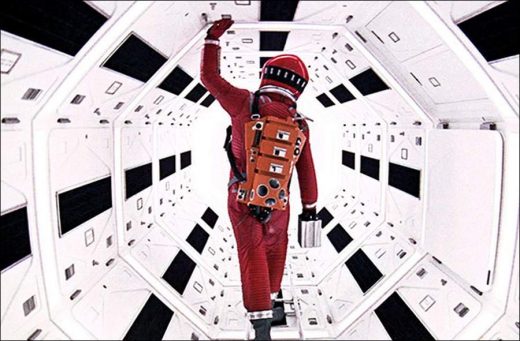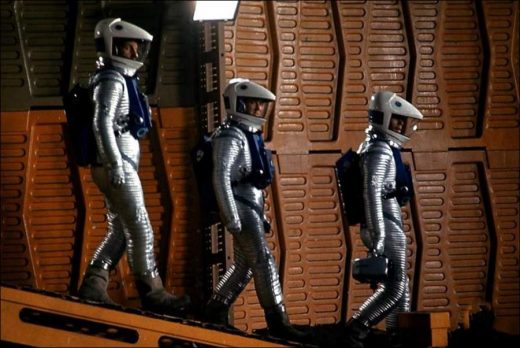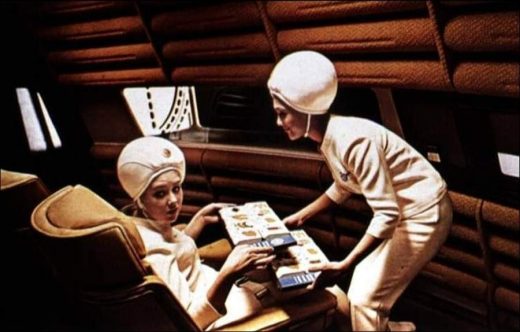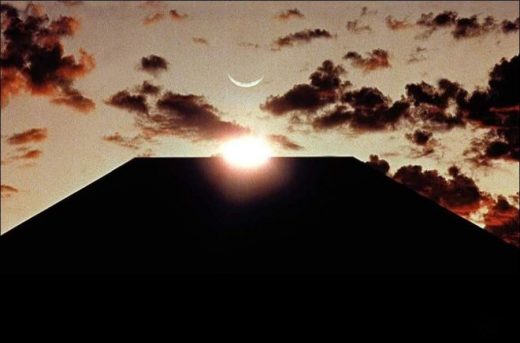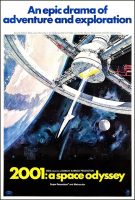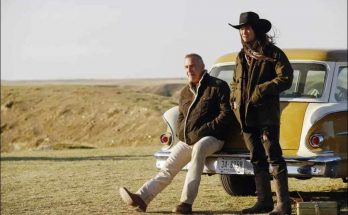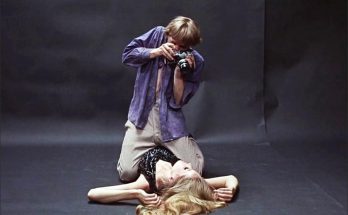2001: A Space Odyssey is a masterpiece that maintains its magic with its big questions about humanity and the universe, the countless layers of the saga it tells, and the way it transforms the science fiction genre.
2001: A Space Odyssey is one of the milestones that changed cinema forever. It is difficult to find new things to say about a film that has had countless articles written about it and has remained on the agenda of thinkers, academics and filmmakers around the world for years. However, as long as this masterpiece, which shows what cinema is capable of, preserves the mysteries it contains, the discussions around the film will continue. The fact that Stanley Kubrick left unanswered the questions he posed about the mystery of existence makes 2001 a film that is still exciting to watch, fifty years after its production.
2001 is a work that transformed not only the history of cinema but also the audience. Despite its modest budget of $12 million, it managed to become the third most watched film of 1968, grossing $56 million at the box office in the United States alone. The fact that 2001, when Kubrick moved away from the classical narrative and woven almost exclusively with sounds and images, was able to turn into a popular culture product can be the subject of a separate article in itself.
2001, which managed to create an impact in a field ranging from Hollywood to European cinema, is one of the rare films that transcends genres and movements and will never be similar in the history of cinema. Its value, like many masterpieces, has been understood over time, with its aesthetics, technical skill and the way it deals with themes that will never lose its relevance.
The article written by the famous critic Andrew Sarris, who would give the film its due years later, when he first watched the film, proves this: “2001: A Space Odyssey, which has nothing interesting, is a complete flop; It is one of the biggest proofs that Stanley Kubrick was unable to tell a story in its entirety and from a consistent perspective. There is no script to talk about, no acting…”
Kubrick said, “The subject of the film symbolizes the search for God, trying to give a scientific explanation of God. (…) While the film revolves around this metaphysical concept, establishing a scientifically consistent world, close to documentary realism, was important to grasp this poetic concept,” he says. Many directors, from Andrey Tarkovsky to Carl Dreyer, from Robert Bresson to Terrence Malick, have shot transcendent films with spiritual elements that try to remind the audience that existence has unfathomable dimensions.
In these films, the mystery of existence was tried to be increased by making the audience feel a divine power and emotions that cannot be expressed in words. The most important difference from the films in search of cinema over 2001 is that, although it opens the door to metaphysics, it rejects the road map offered to humanity by divine teachings.
2001 is a film that accepts the existence of the unknown, but gives meaning to the unknown not through the myths produced by civilization, but through the facts revealed by science. It does not try to establish a relationship with the audience on a spiritual level; A film that tries to open new doors in our minds, on a rational plane, with images and sounds.
It can even be said that Kubrick sought a materialist theology in this film. In this sense, it is possible to see the monolith, which can also be read as a metaphor for God, as a symbol of the cinematic concept created by Kubrick. Confining the idea of God within a symmetrical, sterile object with defined boundaries, Kubrick invites us to a world where abstract ideas transform into concrete objects.
2001 opens with a dark scene that lasts approximately three minutes. This minutes-long darkness, accompanied by eerie music, is an ambitious opening that upset the audience’s expectations and even caused some of the audience to leave the hall. Could the biggest mystery of 2001, which destroyed narrative conventions from the very first scene, lie in this scene? There is no doubt that this long prologue has a great function in helping us make sense of the world of the film.
2001 begins with that ‘first moment’, which we can never know before, but when the seed of existence as we know it was sown. This opening is also seen as a metaphor for the Big Bang, which marks the beginning of time. The film takes us on a great journey from the beginning of the universe, which is approximately thirteen billion years old, to an unknown future where humans will transform into a superior god-like being. It turns into a big epic about where we come from and where we are going.
At a time when the search for meaning had lost its meaning, 2001 again posed the big question to the audience: What are we doing on a pale blue speck in the endless void of the cosmic ocean? Kubrick was reminding humanity, in the heart of the Cold War, on the brink of nuclear war, awaiting its doom, that this question, which no longer seemed meaningless, was still valid. Even though he did not hide his cynical view of the future of civilization, he was asking this question so strongly and grandly with his cinema that his belief in humanity and life could seep through the cracks of this great monument.
It can be understood from the most famous scene of the film that Kubrick’s cynicism is not against humanity but against civilization. That unique graphical mapping from a bone to a spaceship instantly destroys every idea, every monument created by progressive philosophy. In just one cut, Kubrick says, “even though you build spaceships and travel between galaxies, you haven’t actually progressed a single step.” What is the difference between the bone that the first man used as a weapon and the nuclear warhead that you placed in orbit around the earth?
The final scene of the film, which is open to many readings, was designed with reference to the Enlightenment period, when the seeds of modern civilization were sown. The room where Dave, after growing old, points his finger at the monolith (this is exactly the same as the mise-en-scène in Michelangelo’s famous Renaissance painting called The Creation of Adam) and turns into a star-child, is brightly ‘illuminated’ on all sides, a symbol of the Renaissance (which also means rebirth). It is decorated with works of art. If humanity is to move to a different state of existence, it must first shed the burden brought by the Enlightenment. Kubrick does not believe that civilization will transform in its current state, he sees salvation in the possibility of a completely different existence.
At this point, it is useful to return to the opening scene, which is thought to indicate the Big Bang. Can we see the rectangular black screen that we watched for minutes at the beginning, that is, the movie itself, as a version of the monolith that teaches humanity about civilization? When the camera enters the monolith at the end of the movie, isn’t the black screen we saw at the beginning of the movie actually reflected on the screen again?
The camera emerging from the monolith places our gaze next to the star-child watching the world. Everything is back to square one. Kubrick, who throws us out of the world and takes us through a time tunnel of billions of years, almost wants us to look at that little blue dot as it turns into a tabula rasa. The star-child is a representation of the ideal point we will reach with our changing perspective, rather than a different form of existence that we will reach after thousands of years.
Before you are a thousand confident beliefs, ideologies and economic doctrines; There is a brand new pale blue dot, free from every hunter and every marauder, every hero and every coward, every moral teacher, every corrupt politician, every superstar, every supreme leader. How do you imagine it now?
All about 2001: A Space Odyssey movie.
2001: A Space Odyssey (1968)
Directed by: Stanley Kubrick
Starring: Keir Dullea, Gary Lockwood, William Sylvester, Daniel Richter, Leonard Rossiter, Margaret Tyzack, Robert Beatty, Sean Sullivan, Douglas Rain, Frank Miller, Bill Weston, Ann Gillis
Screenplay by: Stanley Kubrick, Arthur C. Clarke
Production Design by: Ernest Archer, Harry Lange, Anthony Masters
Cinematography by: Geoffrey Unsworth
Film Editing by: Ray Lovejoy
Set Decoration by: Robert Cartwright
Art Direction by: John Hoesli
Distributed by: Metro-Goldwyn-Mayer
Release Date: April 3, 1968 (United States), May 15, 1968 (United Kingdom)
Visits: 54
